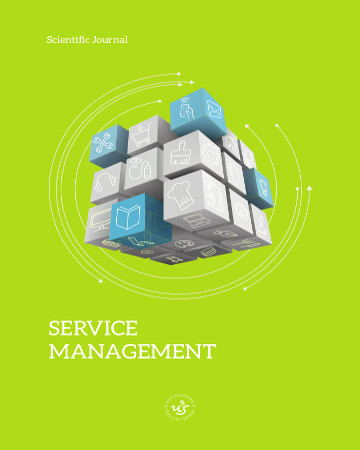
ISSN: 2450-8535
eISSN: 2451-2729
OAI
DOI: 10.18276/ejsm.2018.27/2-38


Issue archive /
Vol. 27/2, 3/2018
Communication With Clients Using Electronic Mail – Analysis of the Expectations of Various Market Segments
| Authors: |
Izabela
Ostrowska
University of Szczecin, Faculty of Management and Economics of Services |
| Keywords: | marketing qualitative research e-mail communications energy supplier |
| Data publikacji całości: | 2018-12-31 |
| Page range: | 7 (315-321) |
| Klasyfikacja JEL: | M19 Q41 D83 D12 D22 |
Abstract
This article is a part of the series of publications on written communication. The aim of the article is to evaluate the possibilities of electronic communication with individual market segments and to identify key elements of e-mail communication and to adapt them to the preferences of clients. Three segments of consumers were identified in the research – young people (up to 40 years old), mature ones (over 40 years of age) and corporate consumers. Each of these groups has different habits regarding communication, which they transfer to relationships with suppliers of goods and services. Older people communicate with energy supplier mostly by mail or by visiting the customer service point personally. Younger people choose electronic communication or via the hotline. Entrepreneurs’ representatives most eagerly handle matters by e-mail.
Download file
Article file
Bibliography
| 1. | Addams, L.H, Allred, A.T. (2015). Business communication course redesigned: all written and oral communication assignments based on building career skills. Academy of Educational Leadership Journal, 19 (1), 250–263. |
| 2. | Bavelas, A., Barrett, D. (1951). An Experimental Approach to Organizational Communication. Personnel, 27, 366–371. |
| 3. | Blythe, J. (2002). Komunikacja marketingowa. Warszawa: PWE. |
| 4. | Burgess, A., Jackson, T.W., Edwards, J.E. (2005). Email training significantly reduces email defects. International Journal of Information Management, 25 (1), 71–83. |
| 5. | Calma, A. (2013). Fixing holes where the rain gets in Problem areas in the development of generic skills in business. Journal of International Education in Business, 6 (1), 35–50. |
| 6. | CBOS (2017). Korzystanie z internetu. Komunikat z badań nr 49/2017. Warszawa. |
| 7. | Daft, R.L., Lengel, R.H. (1984). Information richness: A new approach to managerial behavior and organization design. In: L.L. Cummings, B.M. Staw (eds.), Research in organizational behavior: Vol. 6 (pp. 191–233). Homewood, IL: JAI Press. |
| 8. | Engel, J.F., Warshaw, M.R., Kinnear, T.C. (1998). Promotion Strategy. Chicago: Irwin. |
| 9. | Hossain, M.T., Chonko, L.B. (2018). Relational communication and illusionary loyalty: Moderating role of selfconstrual. Industrial Marketing Management, 69, 221–234. |
| 10. | Kiesler, S., Siegel, J., McGuir, T.W., (1984). Social psychological aspects of computer-mediated Communications, American Psychologist, 39, 1123–1134. |
| 11. | Kramer, J. (2013). System informacji i komunikacji marketingowej wobec wyzwań gospodarki opartej na wiedzy i mądrości. In: A. Bajdak (ed.), Komunikacja marketingowa – współczesne wyzwania i kierunki rozwoju. Katowice” Wydawnictwo Uniwersytetu Ekonomicznego. |
| 12. | Krapels, R.H., Davis, B.D. (2003). Designation of “Communication Skills” in Position Listings. Business Communication Quaterly, 66 (2), 90–96. |
| 13. | Markus, M.L. (1994). Electronic mail as the medium of managerial choice. Organization Science, 5, 502–527. |
| 14. | Murphy, M., Sashi, C.M. (2018). Communication, interactivity, and satisfaction in B2B relationships. Industrial Marketing Management, 68, 1–12. |
| 15. | Nantz, K.S., Drexel, C.L. (1995). Incorporating electronic mail into the business communication course. Business Communication Quarterly, 58, 45–49. |
| 16. | O’Sullivan, T., Hartley, J., Saunders, D., Montgomery, M., Fiske, J. (2005). Kluczowe pojęcia w komunikowaniu i badaniach kulturowych. Wrocław: Astrum. |
| 17. | Renaud, K., Ramsay, J., Hair, M. (2006). “You’ve got e-mail!”… Shall I deal with it now? Electronic mail from the recipient’s perspective. International Journal of Human–Computer Interaction, 21, 313–332. |
| 18. | Rice, R.E. (ed.) (1984). The new media: Communication, research and technology. Beverly Hills, CA: Sage. |
| 19. | Rosa, G., Ostrowska, I., Słupińska, K., Gracz, L. (2018). Komunikacja międzykulturowa. Kraków: eduLibri. |
| 20. | Urbaniak, M. (1999). Marketing przemysłowy. Warszawa: Wydawnictwo Prawno-Ekonomiczne Infor. |
| 21. | Simerson, B.K., Venn, M.L. (2010). Menedżer jako lider. Warszawa: Oficyna a Wolters Kluwer business. |
| 22. | Simon, H.A. (1976). Administrative Behavior: Study of Decision-Making Processes in Administrative Organization. New York, NY: Free Press. |
| 23. | Soucek, R., Moser, K. (2010). Coping with information overload in email communication: Evaluation of a training intervention. Computers in Human Behavior, 26 (6), 1458–1466. |
| 24. | Sproull, L., Kiesler, S. (1991). Computers, networks and work. Scientific American, 265, 84–91. |
| 25. | Stankiewicz, J. (1999). Komunikowanie się w organizacji. Wrocław: Astrum. |
| 26. | Taranko, T. (2015). Komunikacja marketingowa. Istota, uwarunkowania, efekty. Warszawa: Oficyna a Wolters Kluwer business. |
| 27. | Trocki, M. (2012). Nowoczesne zarządzanie projektami. Warszawa: PWE. |
| 28. | Whittaker, S., Sidner, C. (2005). Email overload: Exploring personal information management of email. International Journal of Information Management, 25, 71–83. |
| 29. | Wiktor, J.W. (2013). Komunikacja marketingowa, Modele, struktury, formy przekazu. Warszawa: Wydawnictwo Naukowe PWN. |